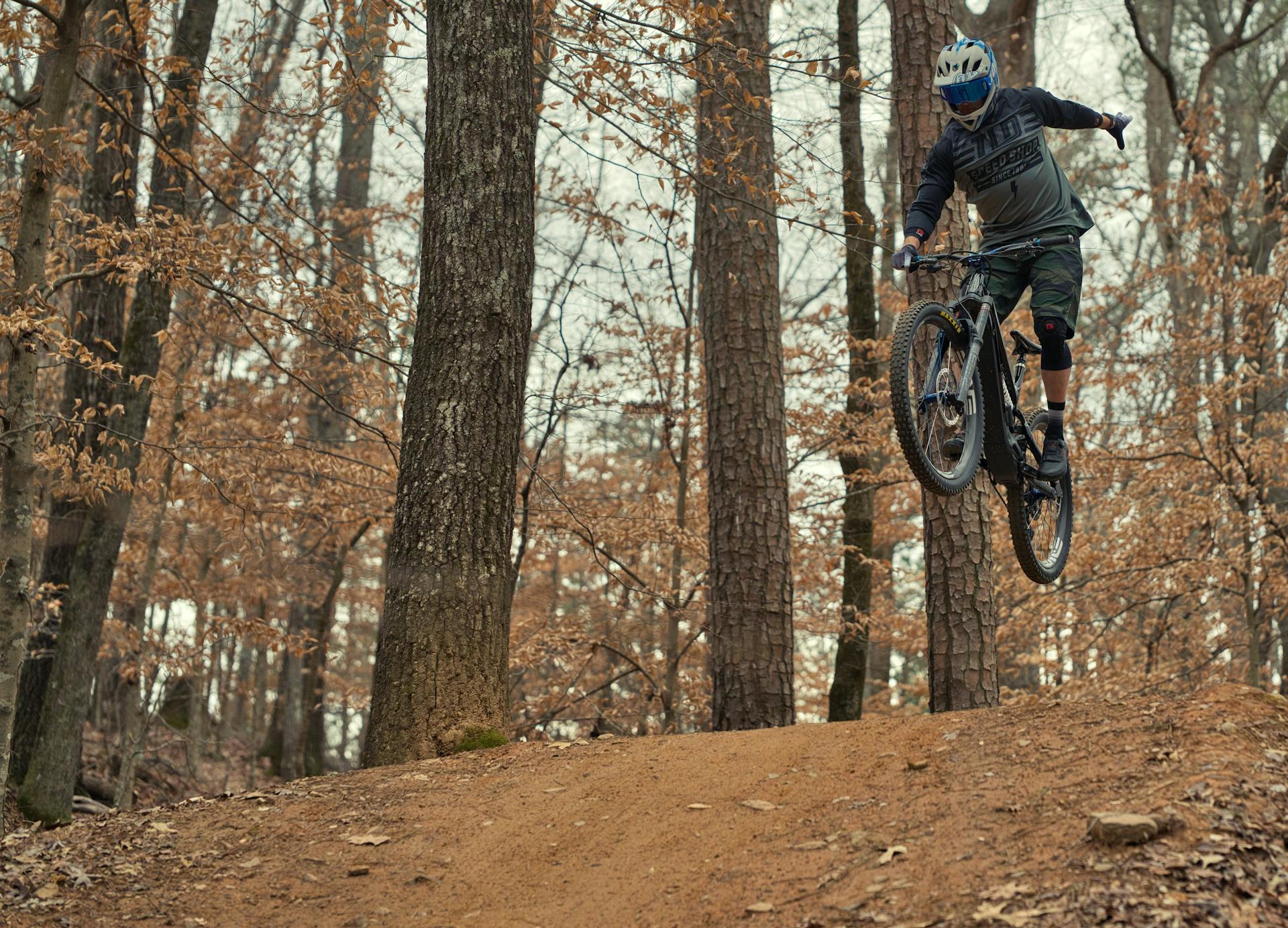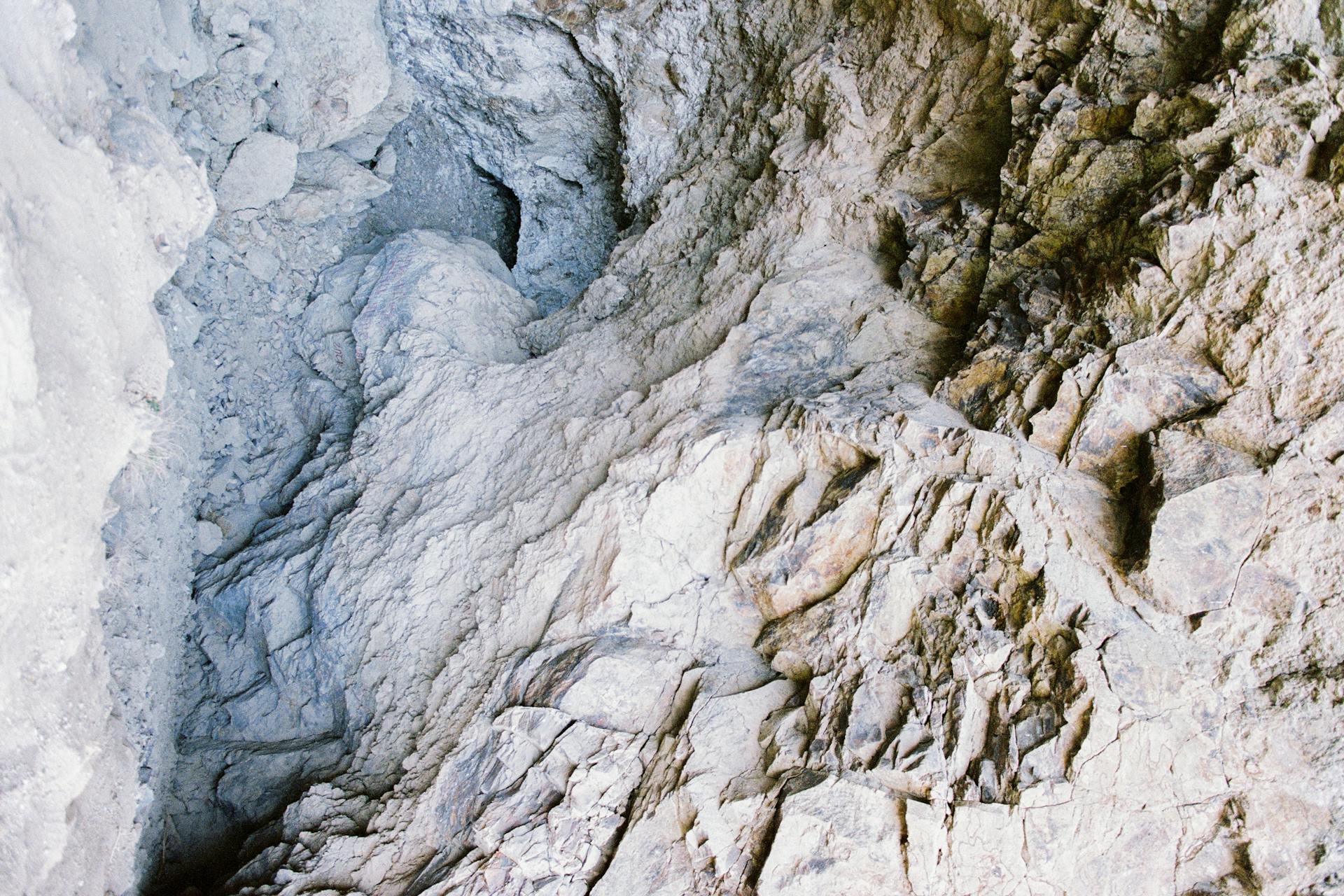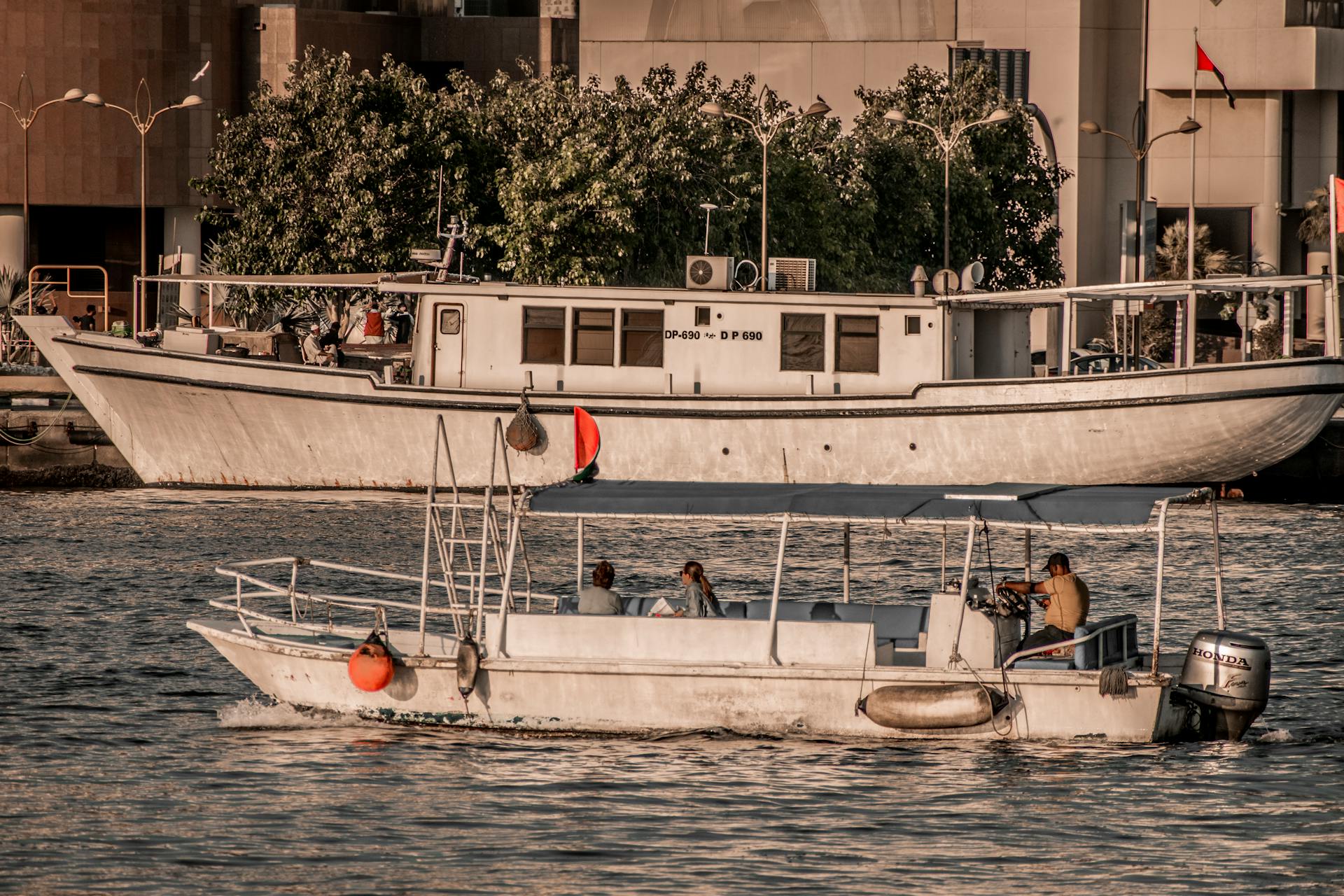
Dubai Creek is a bustling waterway that has been the heart of Dubai's trading and commerce for centuries. It's a place where the old and new meet, with traditional dhows sailing alongside modern skyscrapers.
The creek is about 14 kilometers long and 500 meters wide, making it a significant waterway that connects Dubai to the Arabian Gulf. Its strategic location has made it a vital hub for trade and commerce.
Located in the heart of Dubai, Dubai Creek is surrounded by historic buildings, souks, and museums that showcase the city's rich cultural heritage.
History of Dubai Creek
Dubai Creek has a rich history that spans thousands of years. It was known as River Zara among ancient Greeks.
The creek played a crucial role in the growth of Dubai City, which flourished with maritime trade, pearling, and fishing. Traders from East Africa, Persia, India, and the Arabian Peninsula were drawn to the creek, making it a commercial hub involved in the trade of pearls, gold, textiles, and spices.
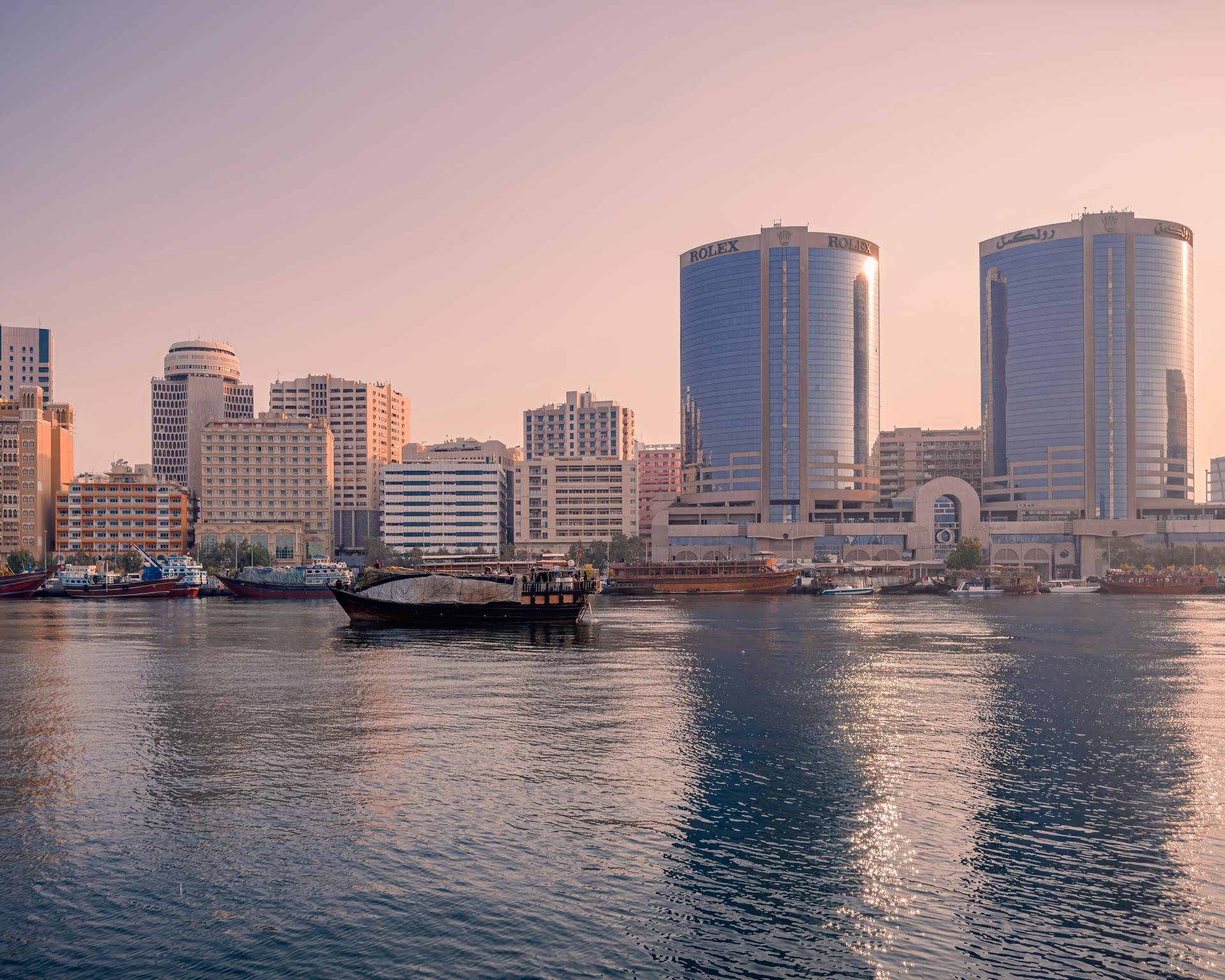
In the 19th century, the Bani Yas tribe started settling in the Bur Dubai Creek area, leading to the Al Maktoum dynasty and the birth of modern Dubai.
- The creek was dredged in 1961 to allow 7-foot draft vessels passage
- Al Maktoum Bridge, built in 1963, was the first bridge to connect Bur Dubai and Deira
City Origins
Dubai Creek played a crucial role in the growth of Dubai City, flourishing with maritime trade, pearling, and fishing since the mid-19th century.
The creek's importance began to diminish with the establishment of major ports, but its legacy remains a vital part of Dubai's history.
The creek was once known as River Zara among ancient Greeks, a testament to its significance in the ancient world.
Dubai Creek was a major pearl diving center thousands of years ago, and its pearl industry drove the economy before oil was discovered.
Back in the early 1900s, dhows from India and East Africa would stop off at the creek, bringing goods and food for trade.
The creek was dredged in 1961 to allow 7-foot draft vessels passage, marking a significant change in the creek's infrastructure.
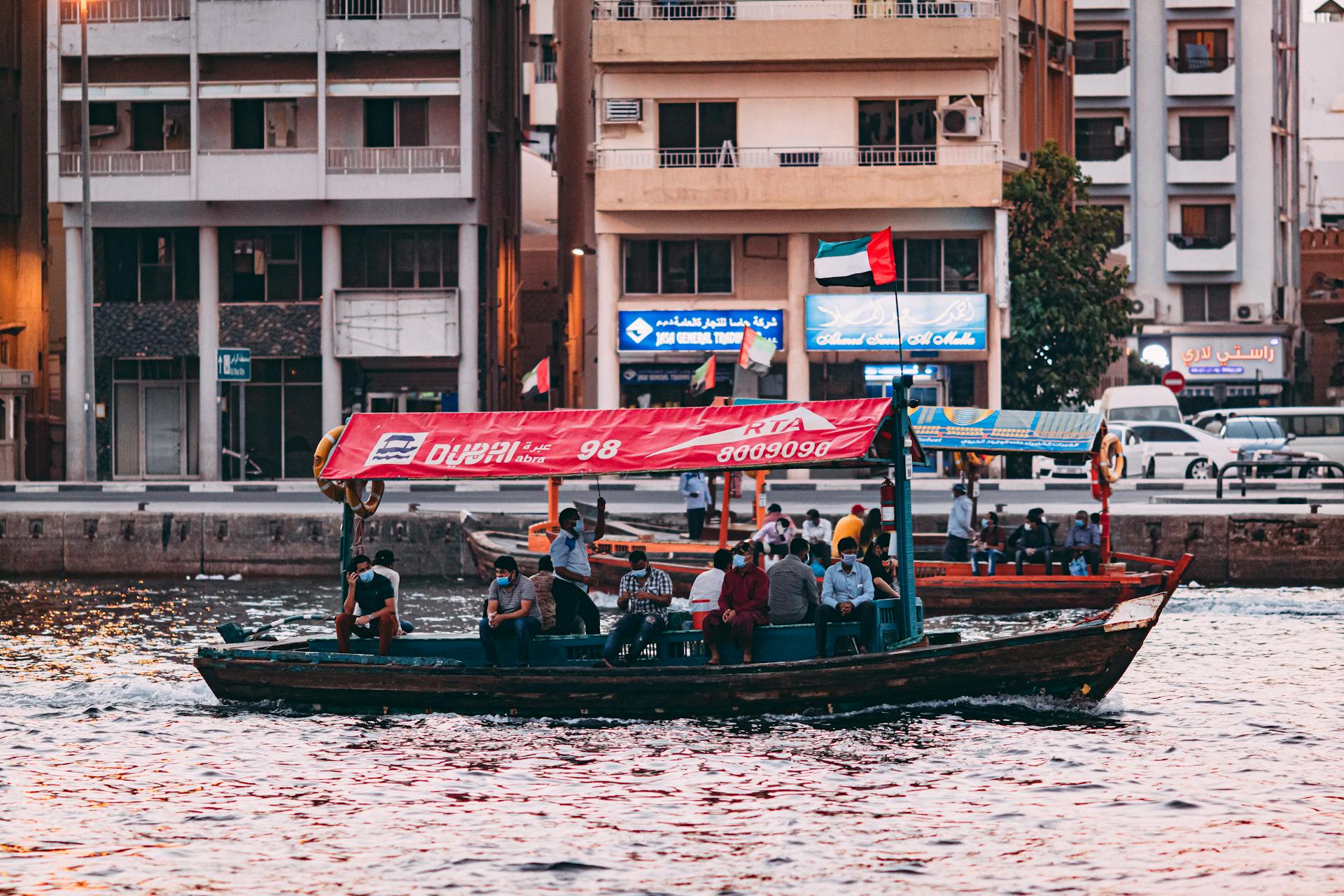
The Al Maktoum dynasty, which settled in the Bur Dubai Creek area in the 19th century, brought about the birth of thriving modern Dubai.
The creek still plays a role in Dubai's economy, with traders using Port Saeed to bring goods and wares to sell.
Here are some key dates in the creek's history:
- 19th century: The Bani Yas tribe started settling in the Bur Dubai Creek area.
- 1961: The creek was dredged to allow 7-foot draft vessels passage.
- 1963: The Al Maktoum Bridge, the first bridge to connect Bur Dubai and Deira, was built.
The Creek's Development
Dubai Creek has undergone significant development over the centuries, transforming from a small fishing village to a bustling trading hub.
The creek's development began in the 16th century when the Portuguese established a trading post in the area, bringing with them new technologies and trade routes.
Dubai's strategic location allowed it to control the trade between the Indian Ocean and the Persian Gulf, making it an attractive location for merchants and traders.
The creek's natural harbor made it an ideal place for ships to dock and unload their cargo, facilitating the growth of trade and commerce in the area.
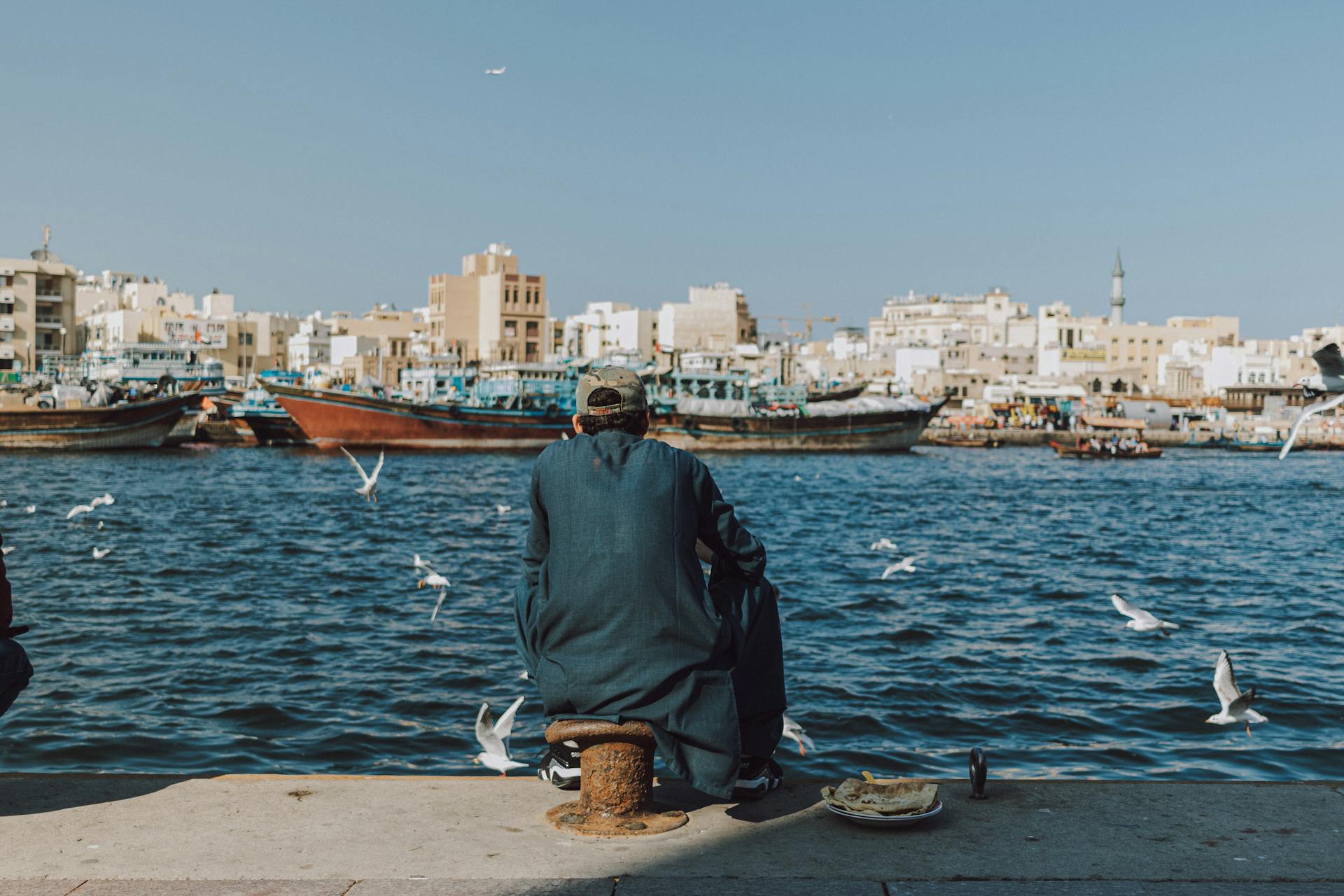
By the 18th century, Dubai had become a major trading center, with merchants from all over the world coming to buy and sell goods such as spices, textiles, and metals.
The creek's development was also driven by the construction of the Al Fahidi Fort in 1787, which served as a customs post and a symbol of Dubai's growing importance as a trading hub.
The fort's construction marked a significant milestone in the creek's development, as it helped to establish Dubai as a major center for trade and commerce in the region.
Recent Development
As we explore the history of Dubai Creek, it's exciting to see the recent development that's taking shape. The Dubai Creek Tower is a landmark project under construction that's set to surpass the Burj Khalifa, the current tallest building.
Located near the Ras Al Khor National Wildlife Sanctuary, the tower is a significant addition to Dubai's skyline. The construction of the Dubai Creek Tower is scheduled to be completed in 2025.
Getting Around
Getting Around Dubai Creek is relatively easy, with several transportation options available. You can reach Dubai Creek by metro, bus, taxi, or car.
The metro is the fastest way to get to Dubai Creek, with two stations, Al Ras and Al Ghubaiba, located close to the creek. You can walk to the creek from either station in under 10 minutes.
Several bus routes, including C01, C03, C07, C09, C18, and C19, stop near the creek. You can check the bus schedule and map on the RTA website or app.
Hiring a taxi is also an option, with the fare depending on the meter and traffic conditions. You can expect to pay around 20 to 40 dirhams.
Crossings
Getting around Dubai can be a bit confusing, but understanding the various crossings can make a big difference. There are several major crossings to help you navigate the city.
The Al Shindagha Tunnel is one of the most popular crossings, connecting Dubai's northern and southern areas. It's a convenient option for those traveling along the Sheikh Zayed Road.
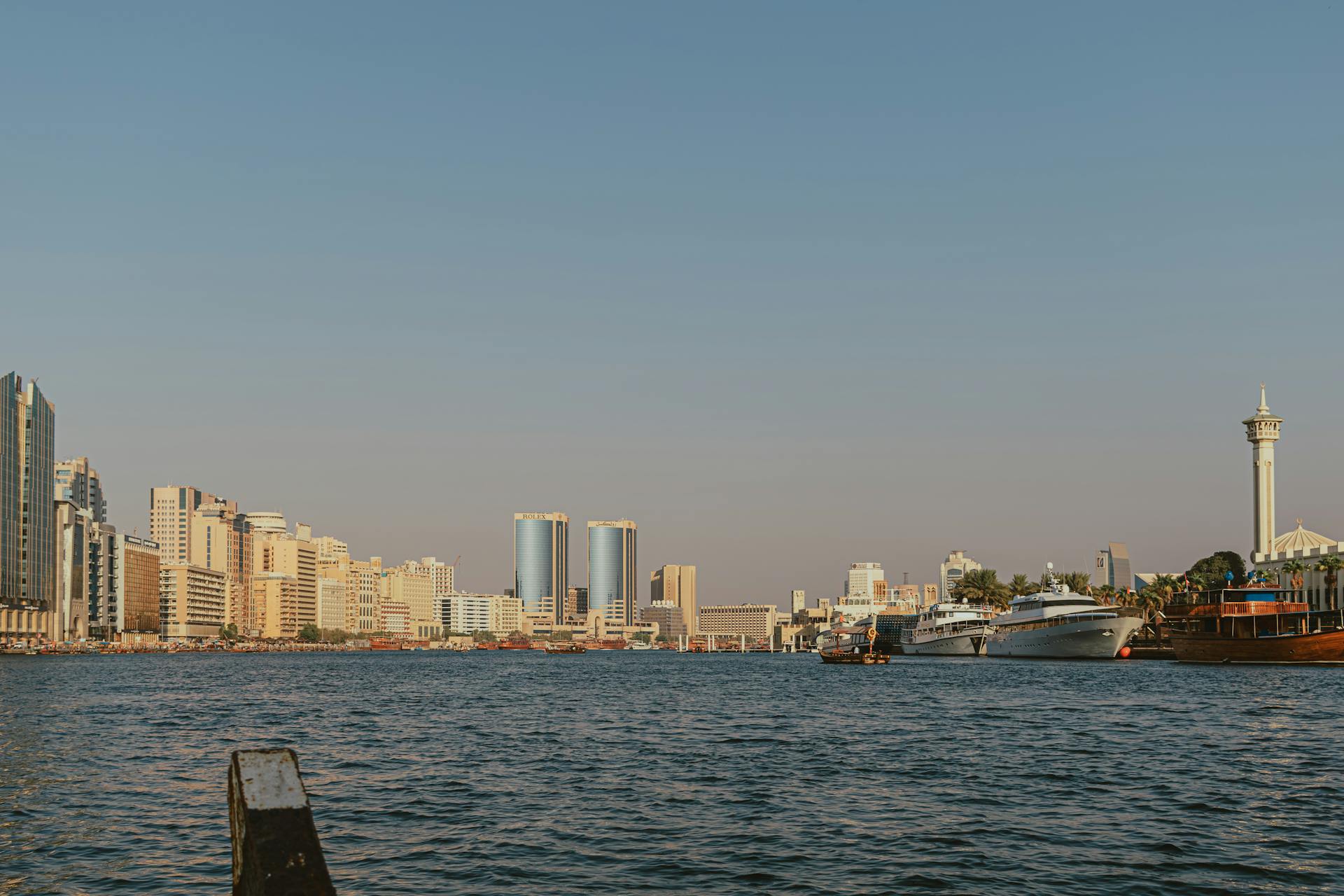
The Al Maktoum Bridge is another key crossing, offering a direct route between Dubai and Abu Dhabi. It's a great choice for those heading to the airport or other northern destinations.
Dubai has a temporary Floating Bridge, which will eventually be replaced by the Dubai Smile. This bridge provides an alternative route for those traveling between Dubai and the northern emirates.
The Al Garhoud Bridge is a crucial crossing for those heading to the airport or other eastern areas of the city. It's a bit of a detour, but it's worth it to avoid traffic congestion.
For those looking for a more scenic route, the Business Bay Crossing offers stunning views of the city's skyline. It's a great option for those traveling between Dubai and the northern emirates.
The Infinity Bridge is another notable crossing, offering a unique perspective on the city's architecture. It's a great spot for photographers and those looking for a unique experience.
Here are some of the key crossings in Dubai:
- Al Shindagha Tunnel
- Al Maktoum Bridge
- Floating Bridge (temporary; to be replaced by the Dubai Smile)
- Al Garhoud Bridge
- Business Bay Crossing
- Infinity Bridge
Future developments include the Dubai Smile, which will replace the Floating Bridge, and the Sheikh Rashid bin Saeed Crossing, which will link Al Jaddaf and Bur Dubai.
How to Reach

Dubai Creek is easily accessible by various modes of transportation. You can reach it by metro, bus, taxi, or car.
The metro is the fastest way to get to Dubai Creek, with two stations, Al Ras and Al Ghubaiba, located close to the creek. Both stations are on the green line and it takes less than 10 minutes to walk to the creek from either station.
There are several bus routes that stop near Dubai Creek, including C01, C03, C07, C09, C18, and C19. You can check the bus schedule and map on the RTA website or app.
The taxi fare to Dubai Creek depends on the meter, but you can expect to pay around 20 to 40 dirhams, depending on the traffic and the time of day. You can book a taxi online or by phone and pay with cash or card.
If you have your own car or a rental car, you can drive to Dubai Creek and park at the designated parking areas near the creek. The parking fee is 2 dirhams per hour.
On a similar theme: Parking Cruise Port of Civitavecchia
Dubai Creek Landmarks
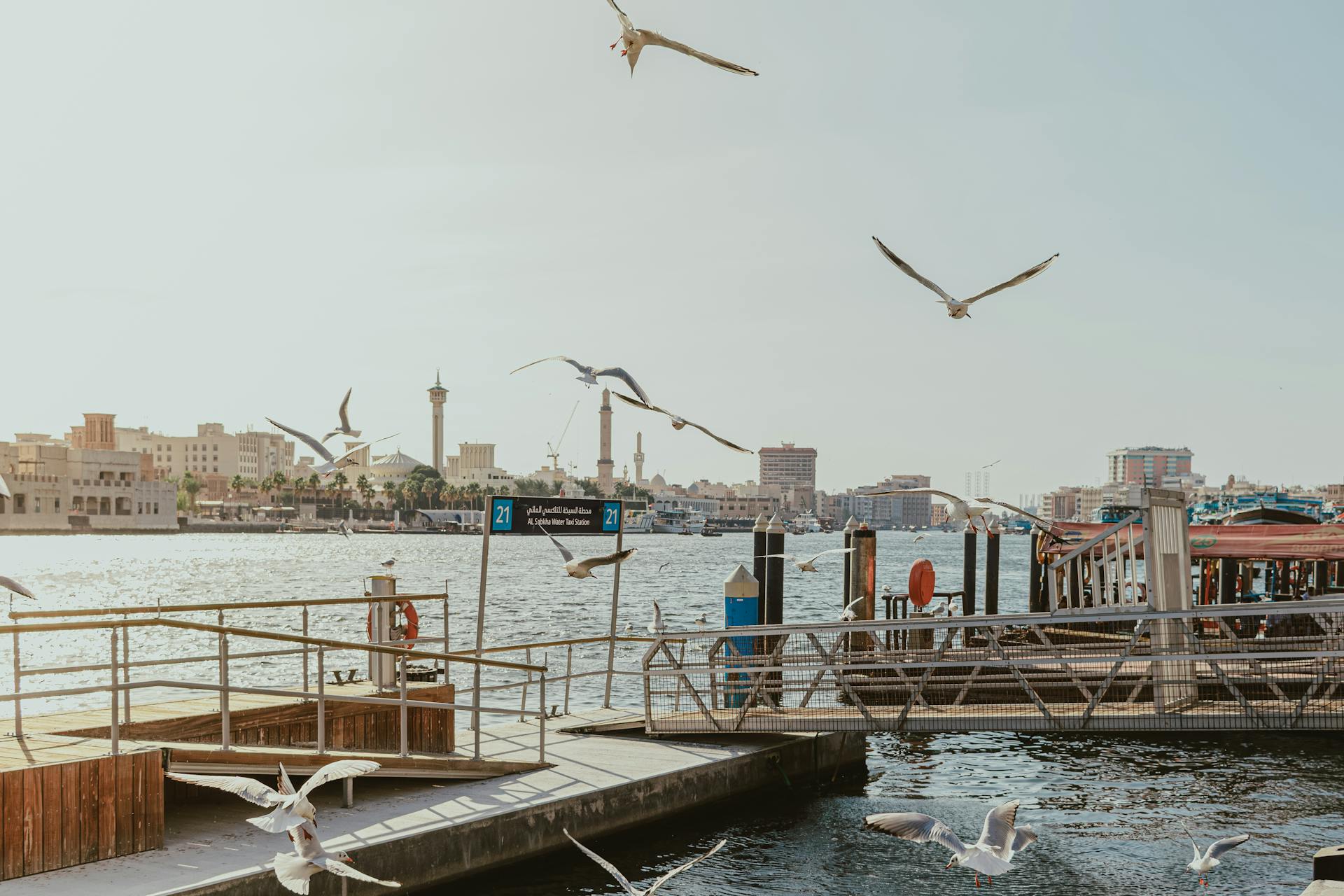
Dubai Creek is home to many iconic landmarks that showcase the city's rich history and modern architecture. The Deira Twin Towers are a prominent feature on the Deira side of the Creek.
The old Dubai Creek Tower is another notable landmark in the area. On the other side of Al Maktoum Bridge, you'll find the beautiful Dubai Creek Park, one of the largest parks in Dubai.
The Dubai Creek Golf & Yacht Club is a popular destination for golf enthusiasts and those looking for a luxurious experience. It features an 18-hole tournament golf course, clubhouses, residential development, and the Park Hyatt hotel.
The National Bank of Dubai and Chamber of Commerce are also located on the Deira side of the Creek, alongside the Sheraton Dubai Creek hotel.
Things to Do
Dubai Creek is a treasure trove of activities and experiences. You can take a traditional abra ride across the creek, which is a great way to see the city's historic architecture and bustling markets.
The creek is also home to a variety of museums, including the Museum of the Souk and the Dubai Museum, which showcase the city's rich cultural heritage and history.
Things to Do

You've got a whole day ahead of you, and you're not sure what to do with it. Visit a local museum to learn something new.
If you're feeling adventurous, try a new outdoor activity like hiking or rock climbing. The thrill of exploring new heights is exhilarating.
Check out a local festival or event to experience the culture and community of your area. Many festivals feature live music, delicious food, and fun activities for all ages.
Take a cooking class to learn new recipes and culinary techniques. Not only will you learn something new, but you'll also get to enjoy the fruits of your labor.
Consider volunteering at a local animal shelter or wildlife conservation organization. Giving back to the community is a rewarding experience that will leave you feeling fulfilled.
For your interest: Msc Cruises Announces New Home Base at Port Canaveral
Best Time to Visit
The best time to visit Dubai Creek is between November and March, when the weather is pleasant and mild, with an average temperature of 25°C.
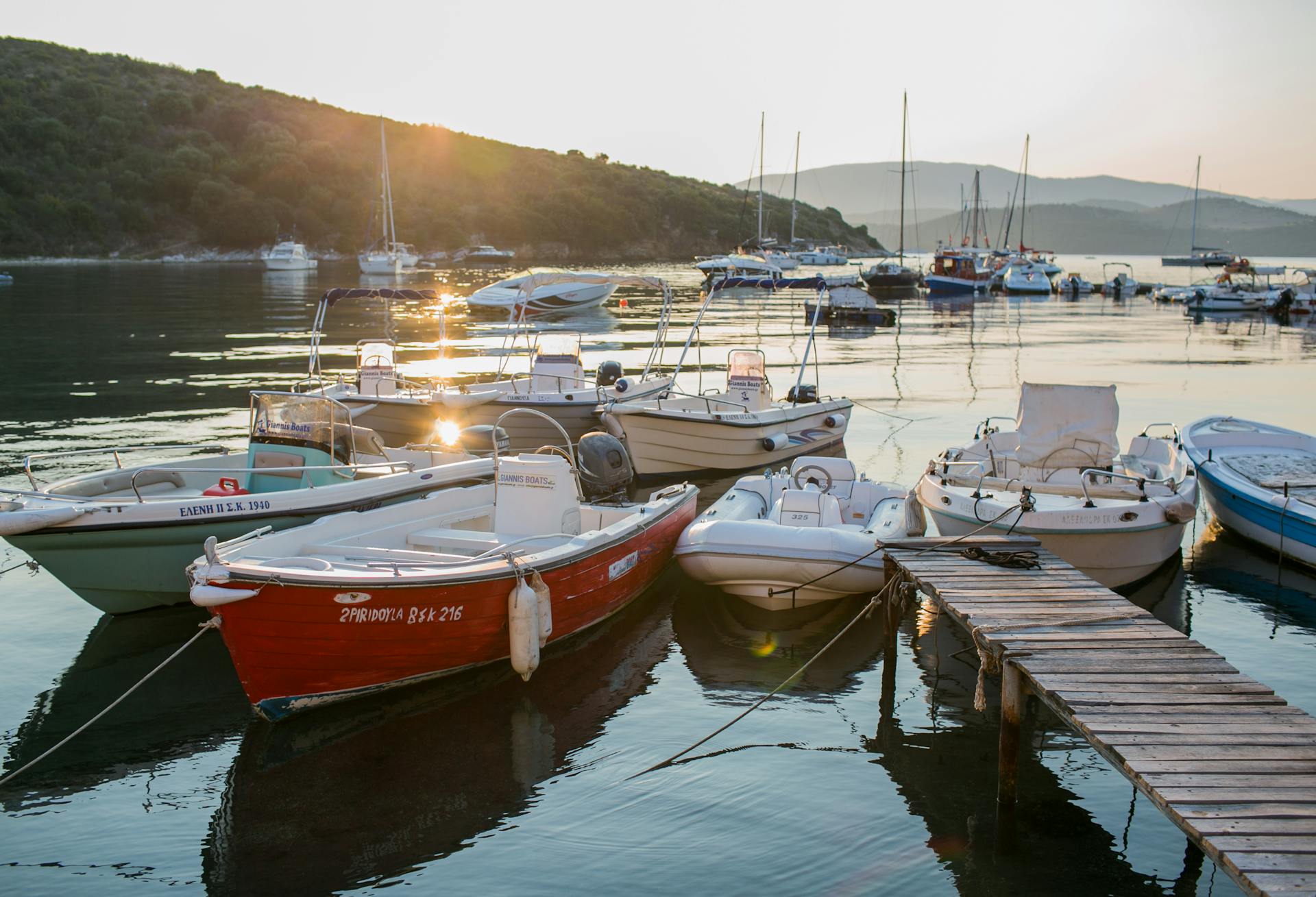
This period is considered the peak season, so expect more crowds and higher prices. However, it's worth it for the comfortable weather and scenic views.
The morning and evening are the best times of day to visit Dubai Creek, when the crowd is less and the views are more stunning. You can enjoy the fresh breeze and calm water in the morning, or the cool air and sparkling water in the evening.
During these times, you can also witness the sunrise or sunset over the creek, making for a truly unforgettable experience.
If you're planning to visit during a special event, consider going during the Dubai Shopping Festival in January or the Dubai Food Festival in February. These events offer special offers and activities at the souks and restaurants, as well as fireworks and light shows over the creek.
Featured Images: pexels.com
